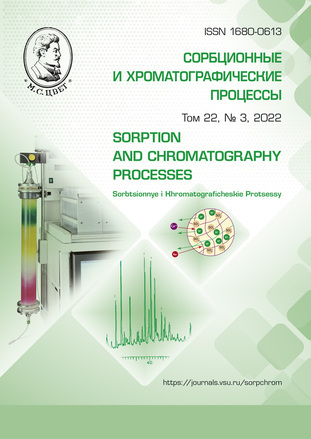Study of the pigment composition (carotenoids and chlorophylls) of sea buckthorn leaves by TLC
Abstract
The pharmacological properties of sea buckthorn leaves are determined by the abundance of biologically active substances (BAS): water- and fat-soluble vitamins (group B, C, and E), polyphenols (tannins and flavonoids), fatty and organic acids (hydroxycinnamic and amino acids), carotenoids (carotenes and xanthophylls), and chlorophylls. Different data estimate the chlorophyll and carotenoid content at 160-760 mg% and 35-150 mg%, respectively. Until now, there have been no studies on the separation and identification of yellow and green pigments in the metabolome of sea buckthorn leaves by TLC. It was also important to study the patterns of accumulation of these BAS in the leaves at different phenological stages of the plant, during its growth and development. The research is necessary for scientific substantiation of the period of harvesting sea buckthorn leaves for their use in pharmaceutics and further development of herbal medicines based on them. The aim of the study was to justify the choice of conditions for the chromatographic separation of pigments (carotenoids and chlorophylls) of sea buckthorn leaves by TLC and study their composition at different periods of harvesting. For the study, we used the leaves of wild sea buckthorn harvested in the Voronezh Region during three stages of development: stage 1 was in mid-June, stage 2 was in the second half of July, and stage 3 was from late August to early September 2021.
The separation patterns for alcohol, acetone, and ethyl acetate extracts were similar, because these solvents can extract both polar xanthophylls and low-polar carotenes and chlorophylls. The hexane extracts, by contrast, exhibited a poorer pigment composition. In terms of the combination of the studied parameters of the efficiency of chromatography, the petroleum ether-ethanol system (16:1) was considered the leading mobile phase, when PTSKh-P-V plates were used.
Thus, we chose the optimum conditions for the separation of sea buckthorn leaf pigments using a thin sorbent layer. We obtained the images of two-dimensional and one-dimensional chromatographic profiles of the pigments from the leaves. They revealed the presence of 6 BAS of the chlorophyll type, including chlorophylls a, b, and pheophytin, as well as 5 BAS of carotenoid group (β-carotene and xanthophylls). The leaves harvested during stage 3 had the most diverse composition and the quantitative content of yellow and green pigments. Therefore, they can be recommended as more valuable for pharmaceutical purposes as potential raw materials for the production of herbal medicines.







